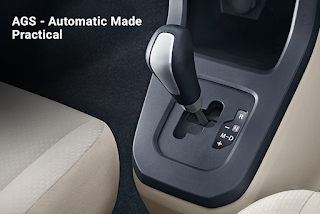Automatic gear shifting (AGS) transmission vehicles have become increasingly popular in recent years as an alternative to traditional manual and automatic transmissions. In this article, we'll explore the advantages and disadvantages of AGS transmission vehicles to help you decide if this type of transmission is right for you.
First, let's define AGS transmission. AGS is a type of transmission that uses sensors, algorithms, and actuators to automatically shift gears based on the speed and torque of the vehicle. AGS can be found in both manual and automatic transmission vehicles, and it can be used to improve fuel efficiency, acceleration, and overall driving performance.
Now, let's take a look at the advantages of AGS transmission vehicles:
-
Improved fuel efficiency: AGS transmission vehicles are able to optimize gear shifting for maximum fuel efficiency. This can result in significant savings on fuel costs, especially for long distance driving or frequent stop-and-go driving.
-
Enhanced performance: AGS transmission vehicles are able to shift gears faster and more smoothly than a human driver, resulting in improved acceleration and overall driving performance.
-
Increased safety: AGS transmission vehicles can help to prevent accidents caused by incorrect gear shifting or missing a shift. AGS can also improve safety in emergency situations by allowing the vehicle to quickly downshift for better braking performance.
-
Greater convenience: AGS transmission vehicles eliminate the need for manual gear shifting, which can be tiring and inconvenient, especially in heavy traffic or on long drives.
-
Improved resale value: AGS transmission vehicles tend to have higher resale values than their manual transmission counterparts, as they are in demand among car buyers.
Now, let's take a look at some of the disadvantages of AGS transmission vehicles:
-
Higher initial cost: AGS transmission vehicles tend to be more expensive than manual transmission vehicles, as the technology is more complex and requires additional components.
-
Limited control: AGS transmission vehicles do not allow the driver to manually shift gears, which can be a disadvantage for some drivers who enjoy the control and feeling of manual gear shifting.
-
Dependence on technology: AGS transmission vehicles rely on sensors, algorithms, and actuators to function, which can be vulnerable to failure. If the AGS system fails, the vehicle may not be able to shift gears at all, rendering it immobile.
-
Limited repair options: AGS transmission vehicles may require specialized training and diagnostic equipment to repair, which can make it more difficult and expensive to find a qualified mechanic.
-
Reduced towing capacity: AGS transmission vehicles may have reduced towing capacity due to the additional weight of the AGS system and the limitations of the transmission.
In conclusion, AGS transmission vehicles offer a number of advantages, including improved fuel efficiency, enhanced performance, increased safety, and greater convenience. However, they also come with some disadvantages, including higher initial cost, limited control for the driver, dependence on technology, limited repair options, and reduced towing capacity. Ultimately, the decision to buy an AGS transmission vehicle will depend on your individual needs and preferences.
Thank you for reading our article about the advantages and disadvantages of AGS transmission vehicles. We hope it has been informative and helpful in your decision-making process. If you have any thoughts or comments about AGS transmission or the article itself, we would love to hear from you! Please share your thoughts with us using the hashtag #AGSTransmission. Your feedback is always appreciated.







No comments:
Post a Comment